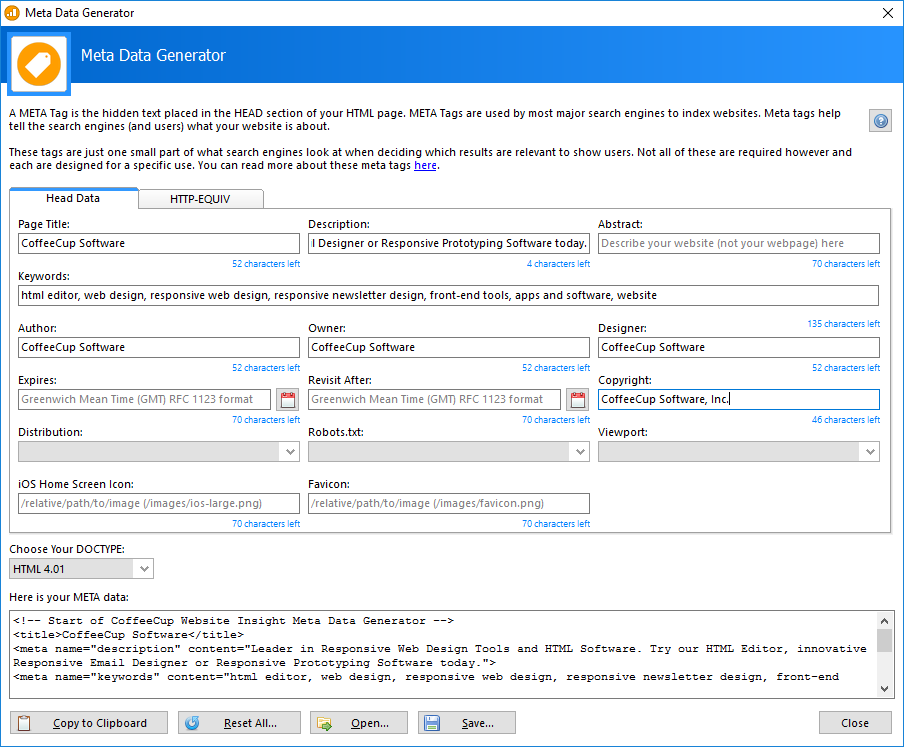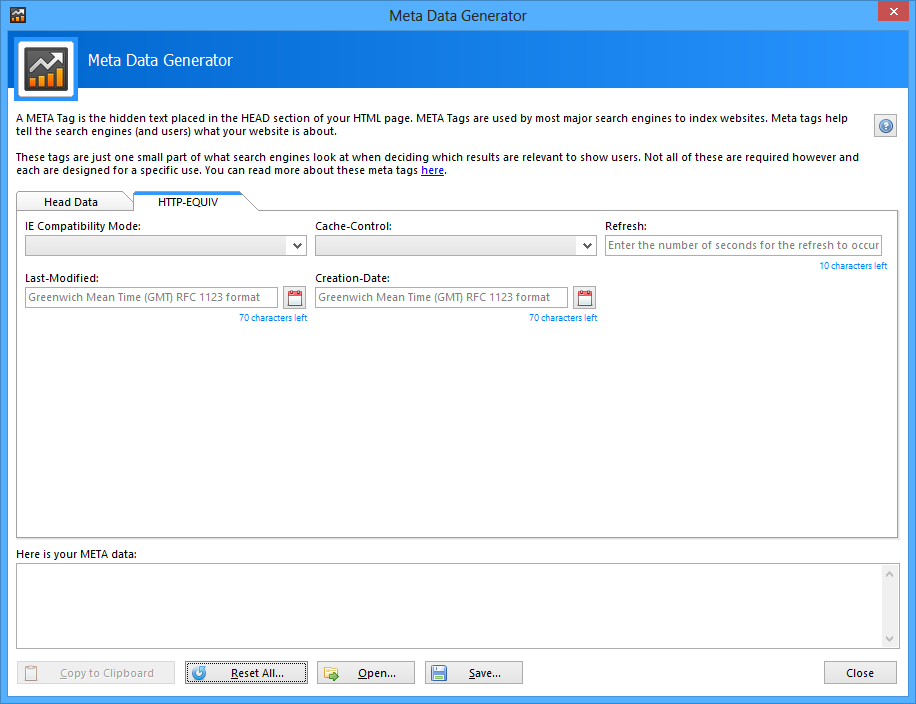HEAD DATA
Meta tags are a way to provide additional information about your page. This information is not displayed on your page and is used primarily for search engines and other services to gain a bit more information about the page they are looking at. Years ago this was the primary way search engines indexed your site by, but due to over abuse, these play only a small role in SEO today. That however does not make them any less important to include on any page.
Meta data is broken down into two areas META and HTTP-EQUIV.

- Page Title: Defines a title in the browser title bar, provides a title for the page when it is added to favorites and displays a title for the page in search-engine results.
- Description: How do you explain your visitor in only 2 or 3 phrases what they can expect on your website? You use the so called DESCRIPTION tag.
- Abstract: Provides a short summary of the description meta tag and is normally used with academic papers. The content for this tag is should be 10 words or less.
- Keywords: Used to list keywords that define the content of your site.
- Author: This Meta tag will reference the name of the person who developed the webpage being viewed.
- Owner: Is generally not used unless you need to display the school, department, office, or other type of organization that owns the web page.
- Designer: This Meta tag declares the designer of the website, however has no impact on search results as search engines to not parse this data.
- Expires: Declares the date and time after which the web document should be considered expired and the browser is forced to redownload the page. This time format must be in HTTP 1.1 (RFC 2068) format.
- Revist After: Search Engines normally do not heed this tag, however, you can attempt to inform search engines when to return to index your site. The recommendation is to not use it. If you do decide to use this tag the time format must by in HTTP 1.1 (RFC 2068) format.
- Copyright: Includes a copyright, trademark, patent, or other information that pertains to intellectual property.
- Distribution: Used to declare the distribution of your web content. The three classifications of distribution are:
- Global (Everyone)
- Local (The local IP of your website)
- IU (Internal Use Only).
- Robots.txt: Controls search engine robots on a per-page basis. The robots.txt lets the Robots know that they may use the links on the page, but not index the page they are on.
- Viewport: Allows you to modify the virtual viewport of the mobile device to something different than the default and is one step in making your site responsive.
- iOS Home Screen Icon: Places a iOS Home Screen Icon for Mac products.
- Favicon: Places a favicon in the browser tab that identifies with your website.
HTTP-EQUIV
While META tags provide a way to add additional information about your page, HTTP-EQUIV's provide a way to change how a page interacts with your browser when it is loaded. Many of these features can be done at the server level, but for hosting services that do not allow you to add your own functions, these give you a way to do this on a per page basis. Think of it as a "server override" function.

- IE Compatibility Mode: Allows you to force IE to load a certain build of thus forcing the browser to be in compatibility mode.
- Cache Control: Controls the caching mechanism to use for the document. Available values include:
- public - cached in public shared caches
- private - cached in private cache
- no-cache - not cached
- no-store - cached but not archived
- Refresh: Defines a time interval for the document to refresh itself.
- Last-Modified: Specifies the last modification date. This time format must by in HTTP 1.1 (RFC 2068) format.
- Creation-Date: Specifies the date and time when the page was created. This time format must by in HTTP 1.1 (RFC 2068) format.

